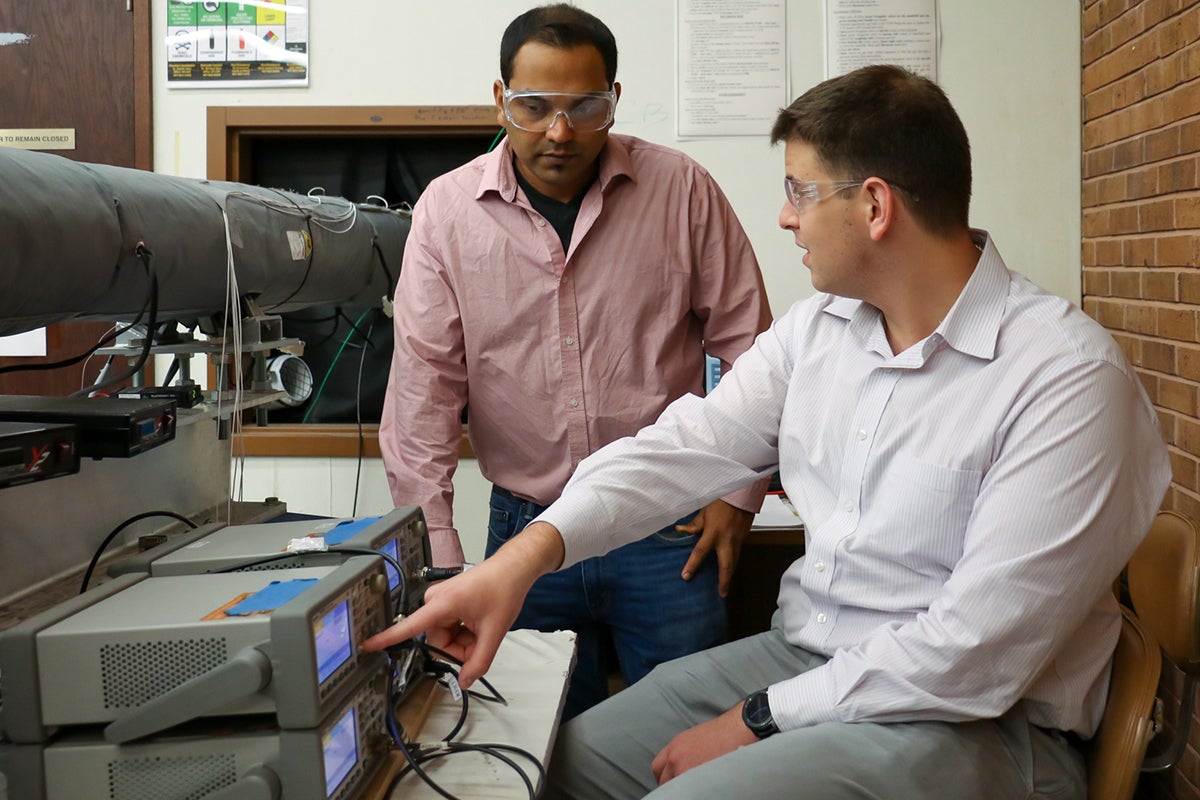Biofuels offer potential benefits as renewable fuels with cleaner emissions, but with thousands of types of biofuels to choose from, it makes it hard for the energy sector to focus on just a few for further development.
That’s why University of Central Florida researchers are working to narrow the field of potential biofuels as part of a Department of Energy initiative, known as the Co-Optimization of Fuels & Engines.
In some of their latest research, which was published in the Proceedings of the National Academy of Sciences, the researchers determined that ethanol is the best biofuel when it comes to producing the least amount of soot, a deadly byproduct of combustion.
Soot exposure is directly linked to respiratory disease, cancer and heart problems.
There are more than 10,000 potential candidates for biofuels, says Subith Vasu, an associate professor in UCF’s Department of Mechanical and Aerospace Engineering, and as a part of this study, his research group was tasked with testing five that the Department of Energy considers some of the most promising.
“There are a lot of efforts within Department of Energy and other agencies to produce more economical, better high-performance biofuels,” Vasu says.
The finding bolsters the use of ethanol as a biofuel. Other biofuels Vasu’s team tested included methyl acetate, which is found in apples, grapes, bananas and some other fruits, and methyl-furan, which is found naturally in myrtle and Dutch lavender.
Ethanol, which is in most gas sold in the U.S., already has a leg up on other biofuels because of the existing infrastructure in place for its manufacture, its use in current engines, and its low cost. In the U.S., it’s often produced from corn.
Samuel Barak, a graduate of UCF’s Department of Mechanical and Aerospace Engineering doctoral program and now a rocket-propulsion engineer at Boeing’s space program, was the lead student author of the study and the primary experimentalist.
“These biofuels are advantageous because they come from existing feedstock, such as crops, and are carbon neutral,” Barak says. “When they are utilized, the carbon is reintroduced into the atmosphere. Fossil fuels on the other hand remove stored underground carbon and put it into our atmosphere when burned.”
Barak said that despite advances, such as battery-powered vehicles, there are still a billion cars driving on the planet, and mixing biofuels with gas is a way to get cleaner emissions from this fleet.
“The beauty of this initiative is to determine which drop-in ready biofuel can be added to our fuel streams as soon as possible that can increase performance, reduce carbon emissions, and will have least impact on existing systems,” Barak says.
In first-of-its-kind experiments, the researchers determined the amount of soot produced by the biofuels by exposing them to temperatures around 3,000 degrees Fahrenheit in a shock tube, a long cylindrical facility that allows for controlled combustion experiments. They used a laser to measure soot produced during the tests.
They also identified chemical pathways involved in combustion reactions, information that can be used to further research into reducing soot production. Data from their research is already being implemented into national computer models of combustion reactions.
The study began in 2017 and will continue through 2021 as the researchers continue to generate data to improve combustion models. The research is funded by the U.S. Department of Energy’s Office of Energy Efficiency and Renewable Energy.
Study co-authors from Vasu’s group also included current doctoral candidates in mechanical engineering Ramees Rahman, Erik Ninnemann, Farhan Arafin and Andrew Laich; Sneha Neupane, a recent graduate of UCF’s Department of Mechanical and Aerospace Engineering doctoral program and now a research associate at Oak Ridge National Laboratory; and Anthony C. Terracciano, a graduate of UCF’s Department of Mechanical and Aerospace Engineering doctoral program and a research faculty in Vasu’s lab.
Vasu received his doctorate in mechanical engineering from Stanford University and joined UCF’s Department of Mechanical and Aerospace Engineering, part of UCF’s College of Engineering and Computer Science, in 2012. He is a member of UCF’s Renewable Energy and Chemical Transformation cluster and UCF’s Center for Advanced Turbomachinery and Energy Research.





